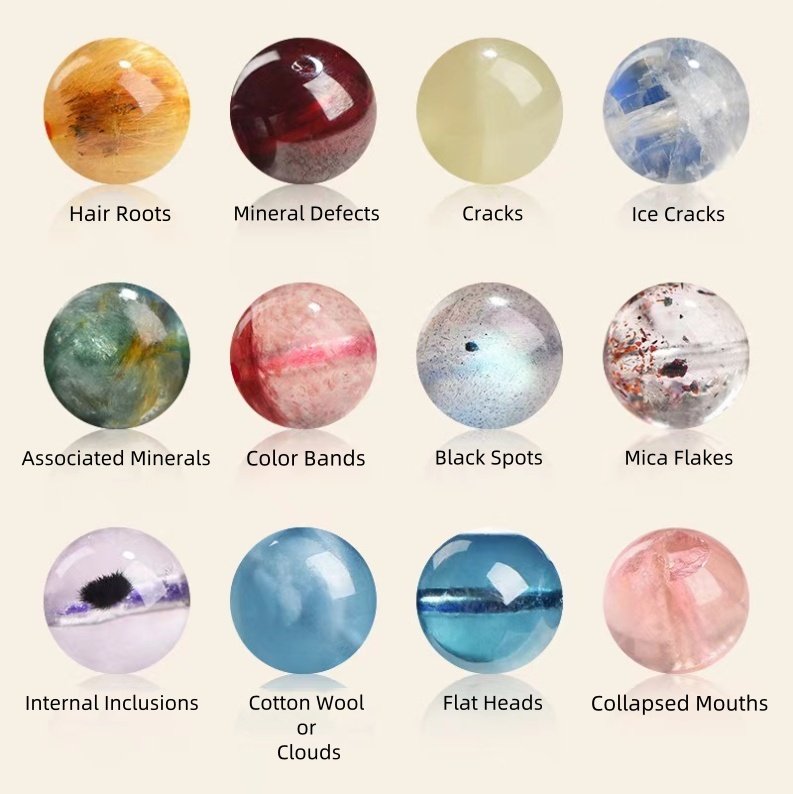Oh dear!I’m glad you saw this article!
If the product you received has these problems, please don’t worry.You should be happy because these problems mean that the product is made of real natural crystal.
Only natural crystal will have the marks left by nature.

- Hair root: The hair root is the origin of the hair. Generally, hair grows from the black root, and the internal components are rutile and mica.
- Mineral defects: The pits on the surface of the crystal are the traces left by the crystal during its growth process. It originally contained other mineral crystals, but due to surface polishing, the minerals fell off, leaving a gap.
- Cracks: Secondary cracks caused by crustal movement are produced after the diagenesis is exposed to the surface. Some of the primary cracks have been covered by later hydrothermal activities.
- Ice cracks: During the long growth process of jade, the continuous changes in its growth environment, crustal movement, earthquakes, etc., cause the interior of its crystal to appear crack-like, called ice cracks. It is very common in pink crystal, amethyst, and white crystal.
- Associated minerals: For the main crystal, because they have similar geochemical properties and common material sources, they often grow in the same crystal for half a lifetime.
- Color bands: During the growth process of colored crystals, due to crustal movement, the surrounding environment changes, and dark and light colors will appear, resulting in the same crystal having two colors of dark and light.
- Black spots: The internal sediment produced during the formation of the crystal slowly settles to a point, and the shape is generally oblate.
- Mica flakes: The internal sediment produced during the formation of the crystal is concentrated in one piece, which will be larger than the black spots.
- Internal inclusions: The inclusions coexist with other minerals. The formation condition is that the crystal is affected by geological changes during its underground growth and is mixed with other minerals to form a natural imprint.
- Cotton wool or cloud: The inside of the transparent crystal has a misty feeling, or there are cotton-like substances inside the crystal. These cotton wool or mist are called cotton wool or mist. It is more common in titanium crystal, amethyst, smoky quartz, and golden hair crystal.
- Flat heads: Flat head beads are more common in crystal round beads. During the grinding process, the beads are polished flat after large pieces of inclusions fall off, thus forming this shape, which is also called flat beads.
- Collapsed mouths: Crystal is a product with weak toughness and brittle crystals, so it is easy to have some collapse during the drilling process, but it does not affect its stringing of bracelets and necklaces, and it will not have any effect on the energy efficacy of the crystal itself.